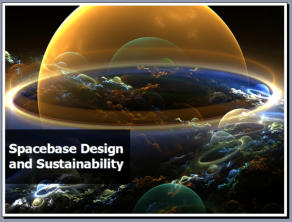
EnGen Institute 1992-2022

I N
S T I T U
T E
SPACEBASE RESEARCH
The ENGEN research programe, commencing in 1982, was inspired by NASA’s 1980 Lunar Spacebase
Architecture study NASA - Advanced Automation for Space Missions which proposed a self-constructing
spacebase (Space Seed) using von Neumenn’s Theory of Self-Reproducing Automata. The study
identified ‘design infinite regress’ as a roadblock issue and was unable to link von Neumann’s
programmable Cellular Automata and unprogrammed Kinetic Automata approaches - see NASA TM-
78304 Self-Replicating Systems - A Systems Engineering Approach.
ENGEN responded to a NASA Outreach Program in 1991 with solutions to these roadblock issues which
NASA’s lead researcher, Georg von Tiesenhausen classified as breakthrough science. This initiated
dialogue with the Australian Minister for Science, the USA Embassy in Australia and NASA HQ leading
to the establishment of EnGen Institute and a proposed co-funded research program to develop a self-
assembling biosphere on Deal Island in Australia, which was to be a permanent research facility.
PERMANENT, INDEPENDENT SURVIVAL IN SPACE REQUIRES FIRST LEARNING -
- HOW TO SURVIVE PERMANENTLY, INDEPENDENTLY ON EARTH!
However, as a result of government, leadership and policy changes in both countries, neither the
Australian nor USA funding eventuated. EnGen Institute continued its systemics-design-automation
research focused on designing disaster resilient structures and an Earthbase with integral life support
systems and closed-cycle automated assembly & repair of recyclable stuctures & infrastructure.
EnGen Institute has developed Constructor Engineering and extended the underlying theory of such
systems beyond von Neumann’s theory, in which self-replication is the only systemic characteristic, to
Cellanics (cellular organic systemics) - a general theory of systemic characteristics in nature, cells,
organisms, machines and built structures such as houses and cities.
This approach provides a free-enterprise path to addressing climate change, in which self-interest &
common-interest are aligned. This design of multi-hazard disaster resilient structures & infrastructure
is most relevant when the risks and impacts are high such as Chernobyl, Fukushima, pandemics, etc.





A
1980
NASA
Lunar
Spacebase
Arcitecture
study
described
teleoperated
spacebase
construction
from
an
initial
100
ton
‘
Space
Seed’
that
mined
and
processed
lunar
materials
to
construct
all
the
machines,
structures
and
biosphere
habitat
for
astronauts
to
later
occupy
with
all
the
plants
required
for
life
support.
To
achieve
this
6-Star
Survival
System
NASA
proposed
using
Constructor
Technology
based
on
computer
pioneer
John
von
Neumann’s
Theory of Universal Construction
.






















